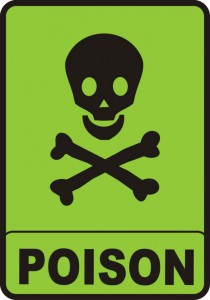The Dangers of Carbon Monoxide
Many parts of the country have already seen snowfall this year, which only means that winter is fast approaching. With weather experts forecasting another frigid winter, everyone’s focus has turned to staying warm for the season. When leaving the house, staying warm involves bundling up and protecting your skin from the bitter air. Keeping warm indoors, however, has a different set of requirements. Most homes utilize a heating source that burns fuel like propane, wood, pellets, oil, and other biofuels. As with burning anything, there always involves a safety risk. One major safety risk everyone should learn about in carbon monoxide.
This minuscule molecule made up of one carbon atom and one oxygen atom may sound innocuous on its own, but when it shows up in large quantities, you need to worry. Carbon monoxide results anytime combustion occurs, meaning whenever something burns. Therefore, any fuel burning creates carbon monoxide, including gas ranges, car exhausts, furnaces, fireplace, and even lanterns. If this burning occurs in a closed space, the concentration of carbon monoxide quickly rises. For this reason, starting your car inside a closed garage is very dangerous. Making it even more sinister is the fact that you cannot detect the colorless, odorless, tasteless gas without the help of a special detector. Consequently, the poisoning effects of the gas on the human body can disable a person before he or she realizes what the issue could be.
You can recognize the start of carbon monoxide poisoning with signs like difficulty breathing, light headedness and nausea. Unfortunately, these symptoms reflect many other illnesses, making carbon monoxide poisoning a far thought. When inhaled, the small molecule blocks the oxygen from being distributed around the body, resulting in unconsciousness, organ failure and even death. To stop and potentially reverse the damage, the person suffering from the poisoning must have access to clean air in an open outdoor space.
The mighty power of this invisible gas makes it a threat that demands respect. Whether you use a fireplace, stove, or gas furnace this season to heat your home, recognize the dangers of carbon monoxide. Install detectors for safety – not just because it is the law – and learn the signs of poisoning. Insuring your heating appliance is functioning properly also goes a long way in preventing carbon monoxide from filling your home. Something as minor as a misfiring furnace or an obstructed chimney could mean the difference between life and death. Instead of risking poisoning, have an expert out to conduct a thorough safety inspection of your heating appliance. If you live in the Boston or North Shore area of Massachusetts or around Portland, Maine, contact Billy Sweet Chimney Sweep to speak with an expert you can trust.

